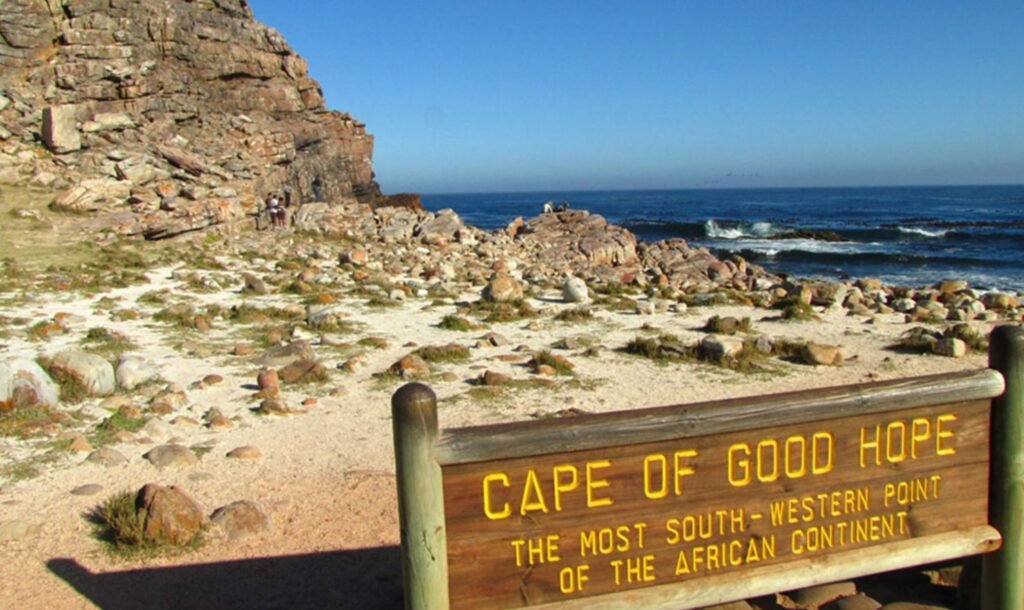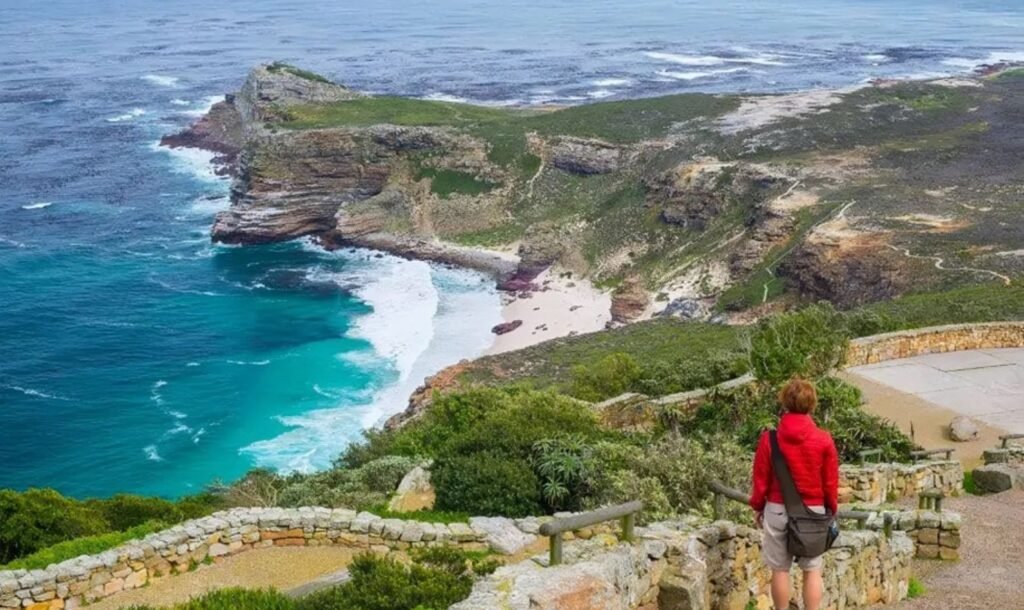
May 17, 2023
Capes are nature’s way of spicing up the coastline with stunning topography. These headlands that jut out into water bodies are not only fascinating but also prone to erosion.
From the mighty South African Cape of Good Hope to other smaller formations around the world, each one has a unique story to tell. So join us on a Cape Town Tour as we explore the natural wonders and cultural landmarks of this remarkable region.

The Cape of Good Hope, a stunning natural wonder located in South Africa, has a rich history that dates back to the last ice age, which occurred between 115,000 to 11,000 years ago.
During this time, massive glaciers covered much of the planet, including the southernmost tip of Africa. As the ice began to recede, it carved out the beautiful landscapes that we see today, including the rugged cliffs and breathtaking coastline of the Cape of Good Hope.
This incredible formation serves as a reminder of the powerful forces of nature and the ever-changing environment that surrounds us.
The Cape’s discovery is a tale of exploration and ambition. During the Age of Exploration, the likes of the Spanish, Portuguese, and Dutch set out on royal missions to expand their empires, spread Christianity, and find new treasures.
Bartolomeu Dias, an explorer seeking the southernmost point of Africa, discovered the Cape of Good Hope, opening up a trade route between Europe and Asia through the Atlantic and Indian Oceans.
The Cape of Good Hope, which is now known for its stunning scenery and wildlife, was once feared by sailors and known as the “Cape of Storms”. This name was given to the region because of the treacherous weather conditions that often plagued ships passing through the area.
Violent storms, strong currents, and powerful winds could quickly turn a voyage into a perilous journey. Many ships were lost along this coastline, and the area became known as a graveyard of ships.
Despite the dangers, however, sailors continued to brave the seas, and the discovery of the new sea route around the Cape of Good Hope eventually led to an era of exploration and trade.
The Cape of Good Hope played a vital role in South Africa’s trading history as a stopover for European ships. But the indigenous Khoikhoi people suffered as a result of European colonization.
With mild winters and hot summers, the Cape of Good Hope offers the perfect weather for outdoor activities and exploration.
The Cape is a sailor’s nightmare with over 1000 shipwrecks to its name. Among them are the tragic stories of the Arniston and the SS Waratah, both lost to treacherous waters.
While the Arniston lighthouse stands in memory of the lost souls, the SS Waratah remains a mystery, its wreckage scattered in the depths of the ocean. These tales serve as a reminder to sailors to tread carefully in the Cape’s waters. However, they also offer a unique opportunity for visitors to explore the past and pay tribute to those who lost their lives. From museums to lighthouses and diving spots, the Cape of Good Hope offers a wealth of experiences for those who seek adventure and a deeper understanding of the human experience.
The Cape of Good Hope is also a land of beauty and danger, shrouded in legends and myths.
While going on a Day Trip To Cape Of Good Hope, explore sandy beaches, seaside resorts, rugged mountains, and a rich socio-cultural heritage.
The Cape of Good Hope – a vital gateway for shipping in South Africa!
The Cape of Good Hope is truly a vital link in the global supply chain.
The Cape of Good Hope boasts various biodiversity and you’ll explore them while on your Cape Town Tour. For example:

Ultimately, the Cape of Good Hope is a fascinating and unique destination, filled with natural beauty, history, and culture. Whether you’re an adventure seeker, nature lover, or simply looking to soak up the local atmosphere, there’s something for everyone to experience on a Cape of Good Hope Day Tour. So why not plan your next trip to this amazing destination with Cape Archives Tours? With their expert guides and wealth of knowledge about the area, you’re sure to have an unforgettable experience. Book your tour today and start exploring the wonders of the Cape of Good Hope!